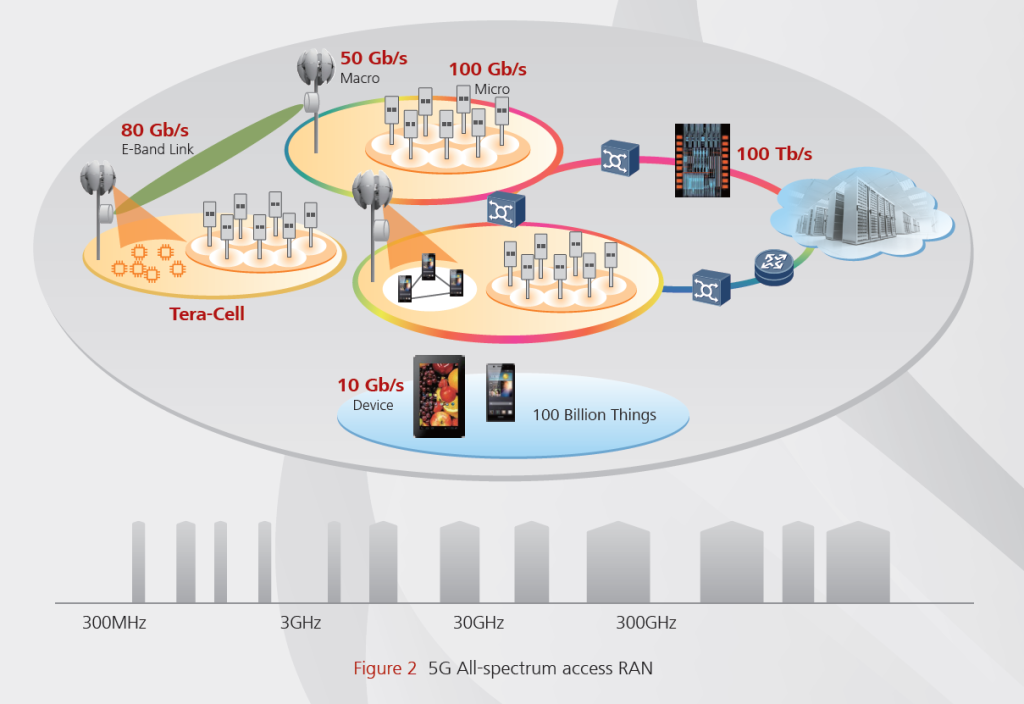The intricate workings of MIMO systems are complex and multifaceted, with user scheduling being a key component that determines the optimal number of users that can be supported. The scheduling algorithm is paramount in achieving high data rates and maximizing system performance, resulting in increased spectral efficiency, reduced interference, and improved overall capacity. However, accurate CSI feedback is also essential to ensure effective user selection algorithms in multiuser MIMO systems. This feedback enables schedulers to select the best set of users based on CQI indicators while mitigating inter-user interference and improving throughput. Nevertheless, optimizing CSI feedback is necessary to prevent excessive overhead from causing delays and reducing system performance.

Innovative antenna selection strategies have been proposed as an alternative approach for enhancing user scheduling gain in massive MIMO systems. By selecting a subset of antennas at each transmission interval from a large array, antenna selection reduces hardware complexity while still providing significant gains over conventional non-selective schemes. Combining this strategy with user scheduling further boosts data transmission rates by exploiting spatial diversity and reducing inter-user interference beyond what could be achieved solely through user scheduling alone.
The Role of CSI Feedback in User Selection Algorithms for Multiuser MIMO Systems
Contents
- 1 The Role of CSI Feedback in User Selection Algorithms for Multiuser MIMO Systems
- 2 Antenna Selection and User Scheduling Strategies for Massive MIMO Systems
- 3 Investigating the Impact of Imperfect CSI on User Scheduling in MIMO Systems
- 4 Fair Scheduling in Multiuser MIMO Broadcast Channels: A Novel Approach
- 5 Improving Feedback Overhead Reduction in MU-MIMO Systems through User Scheduling
- 6 The Benefits of Low Complexity User Scheduling in MIMO Downlink Systems
- 7 Enhancing Data Transmission Rates through Joint User and Antenna Selection in Multiuser Massive MIMO Systems
In the multiuser MIMO universe, user scheduling algorithms reign supreme in optimizing performance. Aiming to select only the crème de la crème users for transmission based on their channel conditions and system requirements, these algorithms are heavily reliant on accurate Channel State Information (CSI) feedback from receivers. Without CSI feedback, they can’t make an informed decision about which users should be selected or not.

Yet, recent years have seen a flurry of research activity aimed at developing optimal user scheduling algorithms that improve performance even further. One approach combines CSI-based user scheduling with precoding techniques to maximize throughput while minimizing interference between users; simulation results show staggering improvements compared to traditional fixed-user allocation schemes.
Fairness is another crucial aspect of user selection in multiuser MIMO systems – ensuring all users receive equal resource shares regardless of differences in channel conditions or data rates required for transmission. Novel approaches based on CSI feedback such as proportional fairness and max-min fairness criteria have been proposed.
Clearly then, CSI feedback is vital for efficient and effective user selection algorithms in multiuser MIMO systems: it provides critical information about each user’s channel state that optimizes resource allocation while ensuring fairness among all involved parties. The future will no doubt see more advanced strategies leveraging this invaluable tool towards improved throughput efficiency and error rate reduction without compromising any other communication technology advancements or market trends!
Antenna Selection and User Scheduling Strategies for Massive MIMO Systems
The optimization of massive MIMO systems hinges upon the selection of antennas and user scheduling strategies. Numerous algorithms have been recommended by the IEEE, including the optimal scheduling algorithm which factors in channel state information (CSI) feedback to select users with high signal-to-noise ratios (SNRs). This algorithm also takes into account antenna selection and precoding to amplify the sum rate.
Nevertheless, CSI imperfections can impede user scheduling in multiuser MIMO systems. The imprecise feedback reduces channel estimation accuracy resulting in subpar user selection and reduced system capacity. Researchers have proposed various methods such as exploiting statistical properties of channel variations or utilizing machine learning techniques to combat this challenge.
In addition to enhancing system capacity through antenna selection and user scheduling, equitable distribution is paramount for multiuser MIMO broadcast channels. An innovative approach employs a proportional fairness criterion that balances throughput gains amongst users while preventing excessive delays for low-priority users. By ensuring that each user receives an impartial allocation of resources without compromising service quality, this approach enhances overall network efficiency.
Investigating the Impact of Imperfect CSI on User Scheduling in MIMO Systems
The scheduling of users in wireless communication systems is a critical component, particularly within multi-user MIMO broadcast channels where multiple individuals are vying for the same resources. It’s imperative to select the best candidate to transmit data, as it can significantly enhance system performance. However, imperfect channel state information (CSI) may hamper user selection algorithms’ accuracy and lead to suboptimal decisions.
To understand how CSI imperfections impact user scheduling in MIMO systems, various simulation results were obtained using different user selection algorithms under varying levels of interference and limited feedback. A vector containing channel quality indicators that reflect the signal process between each transmitter-receiver pair was used to determine the selected individual. Interestingly enough, findings showed that increased interference or more limited feedback led to decreased accuracy of user selection resulting in lower system throughput.
One way of addressing this issue is by incorporating low complexity algorithms requiring minimal feedback while still achieving satisfactory outcomes. Simple threshold-based strategies or heuristic methods can reduce computational complexity while maintaining reasonable performance gains compared with more complex techniques. Furthermore, optimizing antenna configuration alongside user scheduling could further increase data transmission rates by exploiting spatial diversity in massive MIMO systems.
Overall these discoveries highlight how crucial it is to consider CSI imperfections when designing efficient user selection approaches for wireless communication systems. By balancing complexity with accuracy and incorporating optimal antenna configurations even under challenging conditions such as high interference and limited feedback environments, it’s possible to maximize system performance without compromising reliability or efficiency which leaves us perplexed yet intrigued at what possibilities lie ahead!
Fair Scheduling in Multiuser MIMO Broadcast Channels: A Novel Approach
The pursuit of fair scheduling in multiuser MIMO broadcast channels is a complex and crucial matter that has far-reaching ramifications for system performance. A novel approach has been introduced, which utilizes greedy user selection and orthogonal frequency-division multiplexing (OFDM) to achieve optimal user scheduling. By selecting users with the highest channel gain and implementing zero-forcing beamforming to mitigate inter-user interference, this technique shows significant promise in improving data rate while reducing feedback overhead.
Another method for achieving fair scheduling involves MIMO systems with block diagonalization. This entails antenna selection where only a subset of antennas are used based on each user’s channel state information (CSI). Such an approach leverages spatial multiplexing and diversity gain, allowing more users to be served simultaneously without compromising system performance.
Moreover, a distributed technique under an open-source license was proposed for fair scheduling in multiuser MIMO downlink systems. Low-complexity user selection algorithms were employed here, taking into account both instantaneous CSI and long-term statistics to allocate resources fairly among users while maximizing overall system throughput. Simulation results show considerable gains compared to traditional round-robin or proportional fairness schemes commonly used in such systems.
In summary, achieving fair scheduling requires careful consideration of various factors as there exist multiple approaches like antenna selection techniques, feedback overhead reduction mechanisms along with channel gain estimation methods & resource allocation strategies that can optimize network infrastructure utilization leading towards maximum data transmission rates . These multifaceted solutions aim at optimizing resource allocation by considering diverse factors ensuring efficient use of available resources within the network infrastructure.
Improving Feedback Overhead Reduction in MU-MIMO Systems through User Scheduling
The MU-MIMO system model is quite perplexing, as it involves multiple users and antennas that necessitate efficient scheduling algorithms. One particular algorithm stands out – the user scheduling algorithm – which chooses the best user to transmit data based on specific criteria. However, reducing feedback overhead in MU-MIMO systems has led to low complexity user scheduling algorithms being proposed, aiming for a balance between performance and complexity by selecting users with limited channel information.
Alas, this approach falls short due to imperfect channel state information (CSI), leading to suboptimal performance of these low-complexity algorithms. To combat this issue, linear precoding schemes have been proposed to mitigate CSI’s impact on user selection.
Additionally, fair allocation of resources among different users has gained attention as an important criterion for selecting users in multiuser MIMO broadcast channels. Burstiness becomes apparent when considering both optimal user scheduling’s importance and the factors that need careful consideration while designing low-complexity algorithms given the massive number of antennas present in many MIMO systems today.
Thus, various approaches such as linear precoding can be used to enhance efficiency based on available CSI information in high-dimensional signal spaces where burstiness is prevalent alongside numerous antenna arrays.
The Benefits of Low Complexity User Scheduling in MIMO Downlink Systems
The solution to improving system performance in MIMO downlink systems is no simple task. However, low complexity user scheduling has been identified as an effective strategy. But how does it work? The scheduling problem involves selecting a subset of users from the available set whilst considering channel conditions and other constraints. Seems straightforward enough, right? Not so fast.
Optimal user selection algorithms have been proposed for multiuser MIMO; alas, they require high computational complexity or feedback overhead – both resource-intensive activities. It begs the question: what can be done to reduce these complexities?
Enter low-complexity scheduling strategies that can deliver good results with less computation and feedback overhead requirements in comparison to their optimal counterparts. One such approach is random or semi-random selection based on CQIs while another is predefined priority schemes accounting for factors like fairness or throughput maximization.
In cell-free massive MIMO systems where numerous antennas are distributed within the coverage area, employing low complexity user scheduling strategies comes with added benefits due to spatial diversity and interference cancellation capabilities that enhance data transmission rates.
Understandably, various multi-user MIMO broadcast channels come with diverse constraints and objectives requiring research into new solutions aimed at increasing system performance without hiking up computational complexities nor adding onto feedback overheads – quite a challenging feat!
Enhancing Data Transmission Rates through Joint User and Antenna Selection in Multiuser Massive MIMO Systems
In the realm of multiuser massive MIMO systems, antenna selection and user scheduling are two vital components that demand meticulous attention. While a judicious user scheduling method can optimize data transmission rates by cherry-picking users with superior channel quality, antenna selection schemes that rely on promising rate feedback can further augment system performance.
However, these methods are subject to the imperfections of each user’s CSI which could result in suboptimal selections and diminished overall efficiency. To circumvent this conundrum, an innovative first-user selection scheme has been proposed that identifies the user with maximum CSI for initial transmission. This approach bolsters multiuser diversity gain and elevates system efficacy.
An alternative tactic used to enhance MIMO downlink systems is joint user and antenna selection where both parameters are simultaneously considered to achieve higher throughput rates than traditional approaches which solely focus on one parameter or the other. By amalgamating these variables into a single optimization problem, joint optimization algorithms have demonstrated encouraging outcomes in improving data transmission rates while mitigating overhead costs associated with conventional methods of separate optimization. All aspects need consideration from physical layer up through application layer protocols being utilized at different points along such networks’ communication paths between various endpoints connected together via wired or wireless links depending upon specific use cases involved at any given point in time during network operations lifecycle stages including planning/design phase through deployment/operation/maintenance phases till decommissioning/replacement cycles when new technologies come into play requiring upgrades or replacements due to obsolescence issues arising due technological advancements making older equipment obsolete over time periods spanning decades rather than just years like most consumer electronics products do nowadays thanks largely due Moore’s Law effect driving exponential growth trends seen throughout ICT industry today globally impacting many aspects human life around world today.


